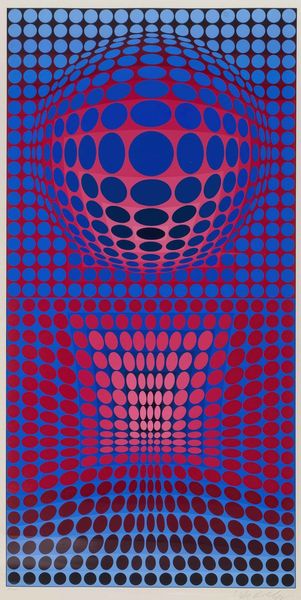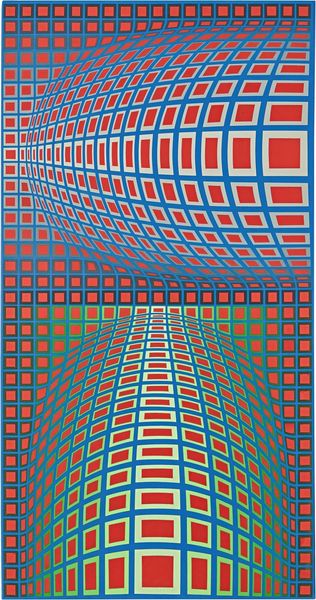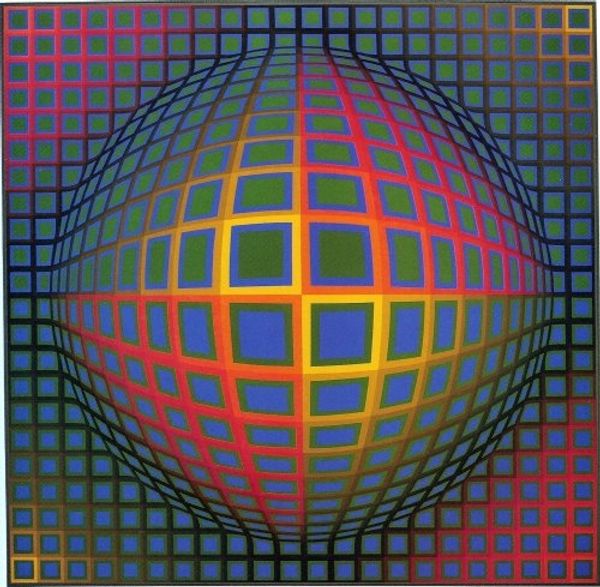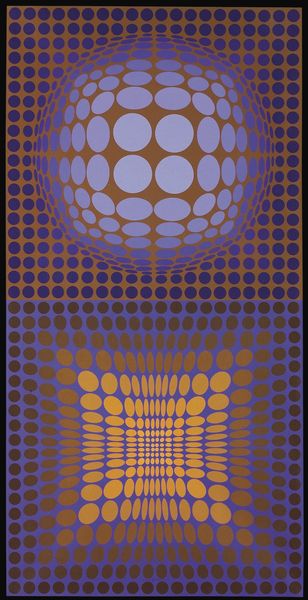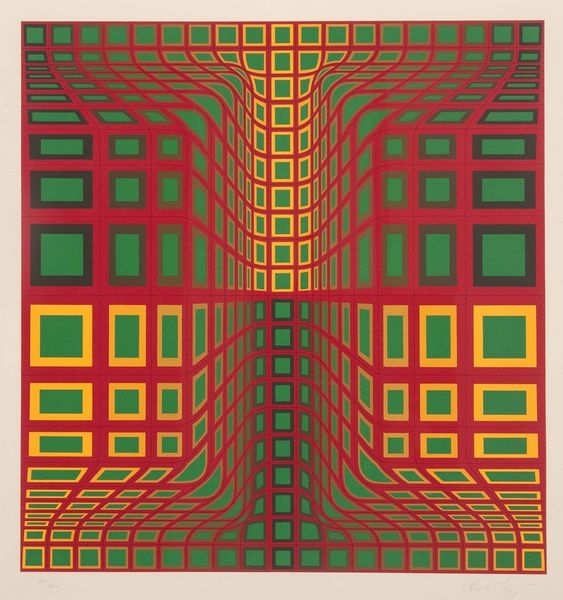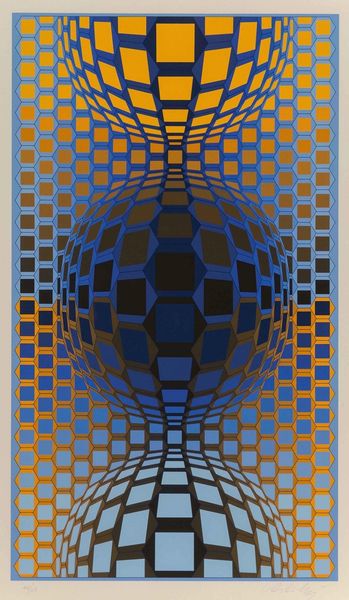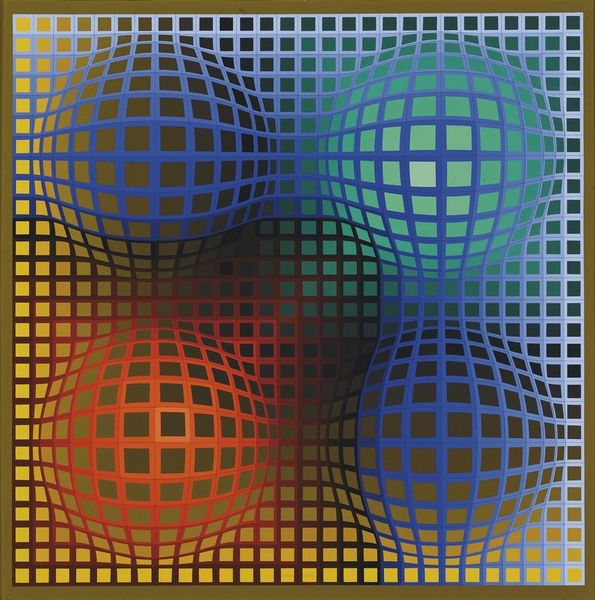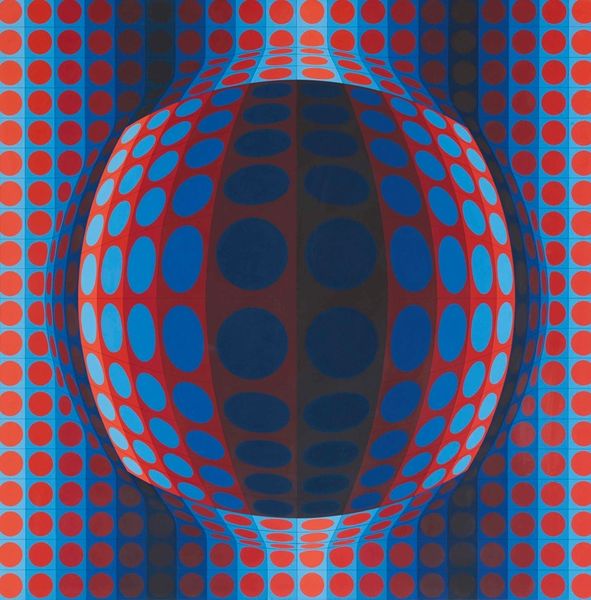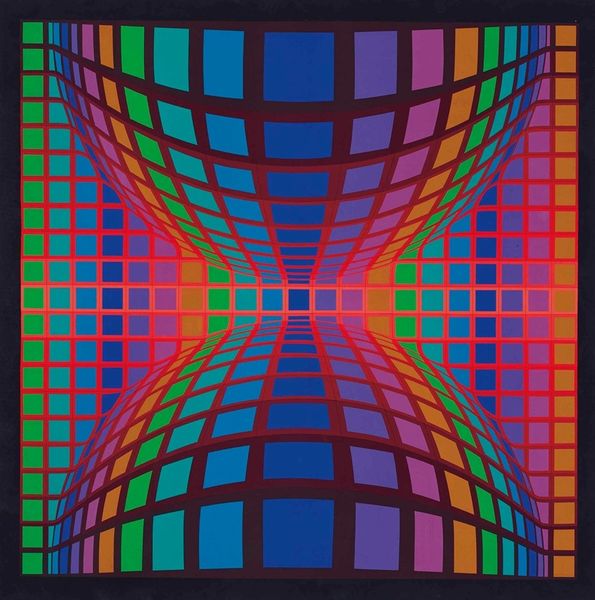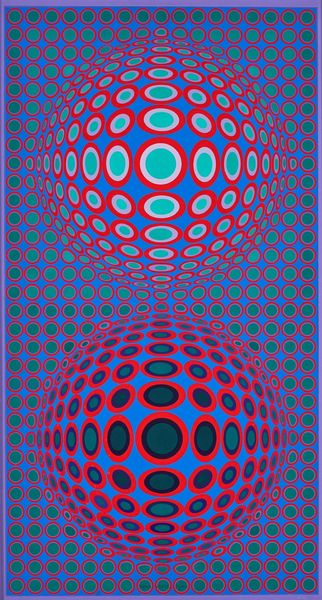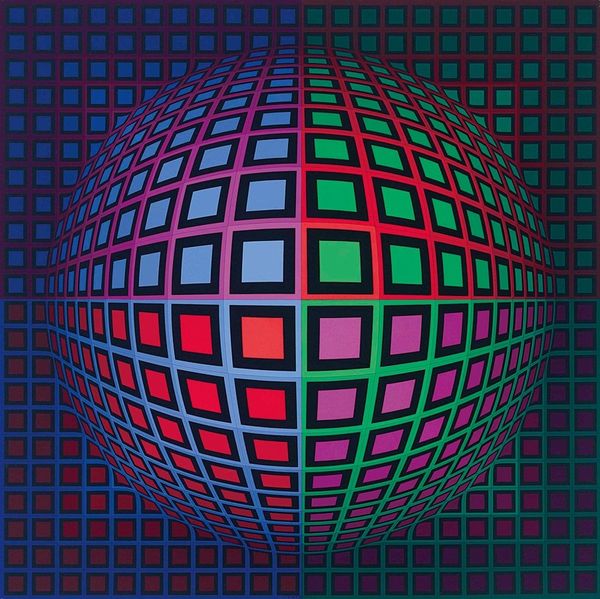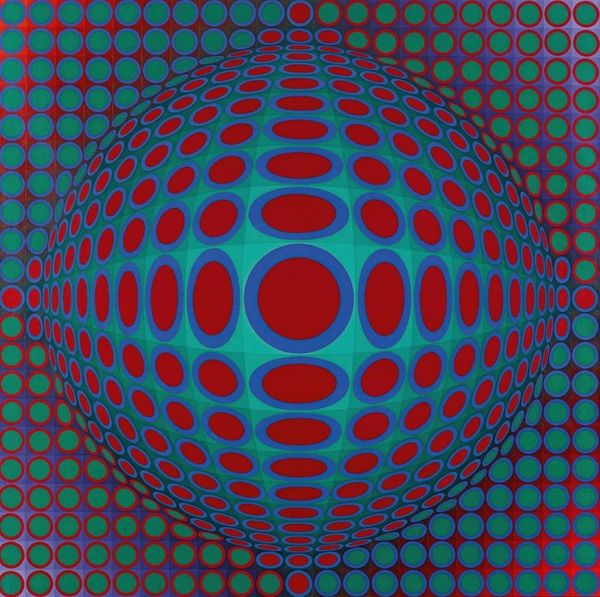
acrylic-paint
#
kinetic-art
#
op-art
#
acrylic-paint
#
geometric
#
geometric-abstraction
#
modernism
Copyright: Modern Artists: Artvee
Curator: Standing before us is Victor Vasarely’s "Composition in Green, Red, and Violet," created in 1980. It's a compelling piece of geometric abstraction painted with acrylic. Editor: It's intensely disorienting! The receding grid and floating orb create a sense of unease, a questioning of depth. The bright hues push and pull. Curator: That unsettling feeling is deliberate. Vasarely was a key figure in Op Art, exploring how visual illusions can challenge our perception. Remember that Op art emerged at a time of profound societal shift with ideas of democratizing art for mass consumption and blurring the boundaries between high and low culture. Do you feel that comes across here? Editor: Absolutely. There's a systematic and almost mechanistic approach with a grid, which I would argue creates a direct visual language related to commercial art. Thinking about its social role, did these types of illusions resonate differently at the peak of the Cold War? Was there a tension between the art's promise of dynamism and progress alongside anxieties of global power structures at that time? Curator: It's fascinating how those geopolitical tensions played out in visual art. This artwork is about spatial tension but also it's tension of identity. The artwork seems to assert that objective observation is inherently mediated by our subjectivity. Do we truly see what is there? Editor: Exactly! I can see those ideas around constructed perspectives at play. The piece feels both incredibly futuristic, with its suggestion of warped space, and tied to the anxieties of an era grappling with technological change. It makes me think, who controlled these spaces of technology, and how was its power shared and accessed? Curator: Well, it feels particularly poignant when considering Vasarely's influence. It is quite impossible to escape its impact on graphic design, and commercial art in the later half of the 20th century. I'd suggest he had significant impact. Editor: It's undeniable, the piece serves as a stark visual representation of how our perceptions can be manipulated.
Comments
No comments
Be the first to comment and join the conversation on the ultimate creative platform.
